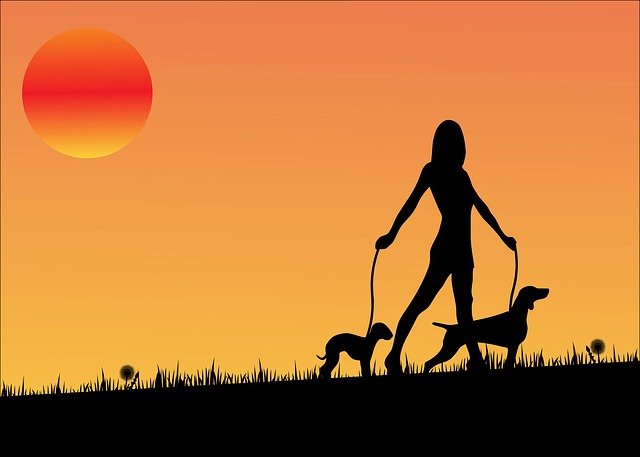This post may contain affiliate links. Please read the disclaimer for more information.
Ever since I started learning about proper foot function, I have been walking almost exclusively on grass instead of the sidewalk that runs alongside it.
I had hurt my left foot badly in a taekwondo class and was trying to find different ways to walk without being in pain.
The grass to the outside of the sidewalk seemed like a no-brainer at first simply because it was more forgiving. Plain and simple, it was softer on my feet. I had been walking with my left heel slightly raised for several weeks and it was starting to affect the muscles upstream in my leg and up in my hip.
While this was good improvisation to walk in the grass, what I didn’t realize yet is that I stumbled into a game-changing concept when it comes to foot health.
Not only is grass softer, it is slightly uneven. It has little bumps, divots, slopes, and all kinds of varying terrain at the micro level. It also has texture. Some grass is dry and hard, some is healthy and soft.
All of this matters because your feet have to adapt to this terrain with every step. Your foot will be forced to turn inward with one step, and outward with another.
Sometimes you’ll step on something that won’t allow your heel to go down all the way or won’t let your toes go down all the way. The plantar muscles (bottom of the foot) will get pushed and poked by different things on the ground which will give your foot the physical feedback it needs to get some myofascial stimulation and to send information to the brain about how you should be walking.
Your toes will be forced to engage, your foot muscles will engage, and your ankle will engage all because it is not perfectly flat ground. This is the beauty of natural terrain like grass in a park.
Perhaps the best part is that your feet want this diversity in surface because it actually makes them more flexible, stronger, and more robust overall. The feet have evolved to do this work.
It is only in recent times that we can walk our entire lives on flat ground from our house to our job to the gym and to the sidewalks. Everything has been made flat and it’s actually detrimental to our feet.
I’ve had many people suggest to me that they must be having foot pain because they haven’t been on flat surfaces enough. The answer is the exact opposite; you haven’t been on enough real, natural, uneven surfaces. The goal is not to make life easy for the feet, it’s to make the feet strong so they can handle any surface.
If you think that’s too extreme, look at other cultures around the world who don’t wear shoes. Sometimes it’s out of financial necessity but sometimes it’s out of choice. The Tarahumara tribe from Mexico famously runs hundreds of miles on dry, rocky terrain in their bare feet. They win long distance races barefoot or in minimalist sandals made from the rubber of an old tire.
They don’t have to care because their feet are insanely strong. This is the way all of us would be if we simply worked our feet like this on a daily basis. Your foot muscles would grow strong, form calluses, and your toes would spread again to grip the ground like fingers.
The feet are like any other muscle in our bodies or like any skill you have; all you have to do is train them consistently to be strong and they will certainly become strong.
As Dr. Ray McClanahan, naturopathic podiatrist, describes in one of his articles,
“Walking on blacktop or concrete is a generally predictable experience, as far as the foot and ankle are concerned. Since these surfaces are mostly flat, the numerous joints in the foot and ankle become aware of moving within limited ranges of motion….Experiencing the full capabilities of the foot and ankle adapting to non-linear surfaces takes practice and time. It also requires wearing no footwear, or choosing footwear that does not restrict foot and ankle motion.”
Dr. McClanahan recommends, and I completely agree, that you practice walking on natural terrain wearing minimalist footwear. He has noted that traditional footwear is too motion-controlled to allow the foot to properly adapt to the new terrain it is feeling.
From personal experience, this is 100% true. Walking in regular gym shoes or in my Birkenstock sandals that I wore for quite a while, the feeling is not even comparable to what you get in a minimalist shoe. My heel is able to come down, the sole of my shoe bends in with pressure, and I can tell exactly what I’m walking on without looking at the ground.
A great place to start is with the TerraFlex all-terrain shoe. It is a minimalist shoe built to handle any rough surface that you’d like to traverse.
No matter what time of year it is, I still practice this. Whether it’s in the grass, in the sand on a beach, on a trail, in the snow; I always avoid the paved walkways as much as I can. In the warmer months, I even do some of it barefoot. Be warned though, that a tolerance must be built up to withstand certain rough surfaces.
But as I said, you can start anytime and anywhere with this process. It is currently winter, so I am walking in my boots next to the sidewalk if the snow isn’t too steep or I’ll go in the street where the snow has been matted down for the most part.
It’s all about going to where there is varied texture. I would usually never walk on the street, but right now it is usually the best option.


Leave a Reply